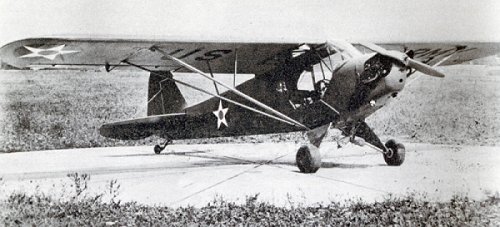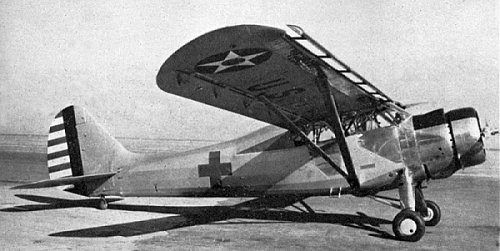Liaison Airplanes in WW-II
Today, peacetime airplanes at war. The University of Houston's College of Engineering presents this series about the machines that make our civilization run, and the people whose ingenuity created them.
When I was a sophomore in high school, I ran into older friend I hadn't seen in a while. "Where you been," I asked. "Oh, I've been in the Army, but I was wounded. I'm out now." "What were you doing," I wondered. He said, "I was an observer in a light plane." I said, "Gee, that must've been dangerous." He allowed it was, and told me about spotting enemy artillery. "One day we were flying along and suddenly holes appeared in the floor by my feet."
He was quite blasé about that brush with death by enemy ground fire. But consider his situation: Armies depend on both aerial observation, and rapid movement of wounded and key personnel. Back then, the first primitive helicopter had flown only five years earlier. We still depended on low-flying Army versions of planes like the Piper Cub. My friend's story has lain on my mind ever since.
The Army used letters for different planes: B for bomber, P for pursuit, and so on. Until 1942, O meant observation. The O's were mostly large single-engine planes, ill-suited for service close to Earth. Then a new letter for a new breed of planes, more intimate with ground forces. It was L for Liaison.
And the light sport planes of the 1930s went to war -- Stinson, Aeronca, Taylorcraft, Cessna. The gaily-painted yellow Piper Cub became the olive-drab Piper L-4. Weighing a scant 740 pounds, it picked up the name Grasshopper. Such planes could take off in as little as two hundred feet. They could land on roads and grass fields. Lightest of the lot was the 680 pound Taylorcraft L-2.
In his memoir Grasshopper Pilot, Mormon flyer Bill Cummings calls the presence of these planes an infestation. Perhaps he was recalling the great 1848 cricket infestation of Salt Lake City. These planes were that numerous. Something like thirty thousand appear to've been built, yet we're hardly aware they existed.
Cummings tells how a troop landing boat was jury-rigged with a take-off deck so American troops landing in North Africa could have the support of Piper Cubs. This was unbelievably hairy flying. We celebrate fighter and bomber pilots in legend and song, while these canvas-covered light planes flew below the radar -- metaphorically as well as literally.
Airplanes such as these had been the whole reason the military adopted flight. When the Army first created an Air Service in 1911, it acquired airplanes purely for use as scouts. Back in WW-I, that was still the primary function of flying machines. Even as aerial combat then became a gladiatorial sport, it was largely being done in support of scouting and aerial observation.
Cummings remarks in his book that he flew 450 missions during the war. It's sobering to think that such a vast exposure to enemy fire in flimsy Grasshoppers never would produce anything we'd call an Ace. It was service off somewhere on the other side of glamour -- dangerous, profoundly important, and largely forgotten.
I'm John Lienhard, at the University of Houston, where we're interested in the way inventive minds work.
A. Adcock, US Liaison Aircraft in Action. (color by Don Greer, Illustrations by David Gebhardt) (Carrollton, TX: Squadron/Signal Publications, Inc., 2005), No. 195.
J. W. Cummings with G. K. Cummings, Grasshopper Pilot. (Kent, Ohio: Kent State University Press, 2005).
For an excellent web page about liaison airplanes, click here.

The light Piper Cub was first renamed as the O-59, later as the L-4. This was one of the Grasshoppers.

This much heavier Vultee O-49 was later redesignated as L-1. It largely did ambulance service.